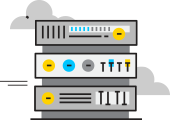Clicktivism refers to the use of digital media for activism, specifically through actions like online petitions, social media campaigns, and email lobbying. Leveraging the Internet’s power, clicktivism allows people to support and promote social, political, environmental, and other causes with just a few mouse clicks.
The Historical Context and Emergence of Clicktivism
Clicktivism can be traced back to the early 2000s, with the rise of internet connectivity and social media platforms. It was first mentioned in a 2010 blog post by Micah White, then an editor at Adbusters, who used the term to critique the ‘slacktivist’ nature of digital activism. However, clicktivism gained prominence following the influential role of social media in the Arab Spring in 2010, and it has been a significant force in mobilizing public opinion and action ever since.
Deep Dive into Clicktivism
Clicktivism transforms traditional forms of activism by leveraging the Internet’s reach and connectivity. Clicktivists use social media platforms, blogs, online petitions, and email campaigns to share information, organize events, and mobilize supporters. The core principles of clicktivism include:
-
Ease of Participation: Clicktivism lowers the barriers to participation by making it simple for anyone with internet access to get involved.
-
Global Reach: It extends beyond geographic boundaries, allowing for global participation and support.
-
Speed: Online platforms enable rapid dissemination of information and quick organization of collective action.
-
Amplification: It allows individuals to amplify their voice, reach, and impact.
Understanding the Dynamics of Clicktivism
The internal structure of clicktivism is centered around online platforms. Social media networks, websites, and apps serve as the stage for clicktivist actions. These platforms facilitate information dissemination, networking, and mobilization of resources. Moreover, they allow for rapid, scalable responses to issues, from signing petitions to making donations, and from sharing content to joining virtual protests.
Key Features of Clicktivism
The critical features of clicktivism include:
-
Accessibility: Clicktivism is open to everyone with internet access, irrespective of their location or resources.
-
Speed: The digital nature of clicktivism enables rapid information dissemination and response.
-
Scalability: Online platforms allow campaigns to scale quickly, reaching thousands or even millions of people.
-
Low-risk: Clicktivism involves less physical risk than traditional activism, as participants can support causes from the safety of their homes.
Types of Clicktivism
Here is a list of the primary forms of clicktivism:
-
Online Petitions: Platforms like Change.org facilitate the creation and signing of online petitions.
-
Email Campaigns: These campaigns lobby decision-makers to enact changes.
-
Social Media Campaigns: Hashtag activism and campaigns on platforms like Twitter and Instagram can quickly raise awareness about issues.
-
Crowdfunding and Donation Drives: Platforms like GoFundMe allow for the quick raising of funds for various causes.
-
Virtual Protests: These are online gatherings where individuals voice their support or opposition to various issues.
Practical Applications, Problems, and Solutions Related to Clicktivism
While clicktivism has democratized activism and increased participation, it is not without challenges. Critics argue that clicktivism promotes ‘slacktivism’, where people engage in low-effort, low-impact actions, leading to less meaningful change.
One way to address this is to design campaigns that promote deeper engagement, going beyond just clicking a button. For instance, campaigns could encourage participants to engage in offline activities as well, such as volunteering or attending a local event.
Comparisons of Clicktivism
Compared to traditional activism, clicktivism is:
- More accessible and inclusive
- Less risky
- Faster and scalable
- Potentially less impactful due to slacktivism
Compared to slacktivism, clicktivism:
- Can have a broader impact
- Can mobilize resources faster
- May still suffer from the issue of low engagement
Future Perspectives and Technologies in Clicktivism
With advancements in technology, clicktivism is expected to grow and evolve. Emerging technologies such as virtual and augmented reality could create immersive experiences that drive deeper engagement. Artificial Intelligence and big data analytics could help tailor campaigns to individuals, increasing their effectiveness.
The Role of Proxy Servers in Clicktivism
Proxy servers can play a significant role in clicktivism. They can provide anonymity, protect activists from surveillance, and bypass geographical restrictions to access blocked websites. In countries with restrictive internet policies, proxy servers can be a vital tool for activists.
Related Links
For more information about clicktivism, refer to the following resources:
- Micah White’s blog post on clicktivism
- The Role of Social Media in the Arab Spring
- The Influence of Clicktivism
By understanding the dynamics, types, and implications of clicktivism, we can utilize this form of digital activism more effectively to effect meaningful change.




